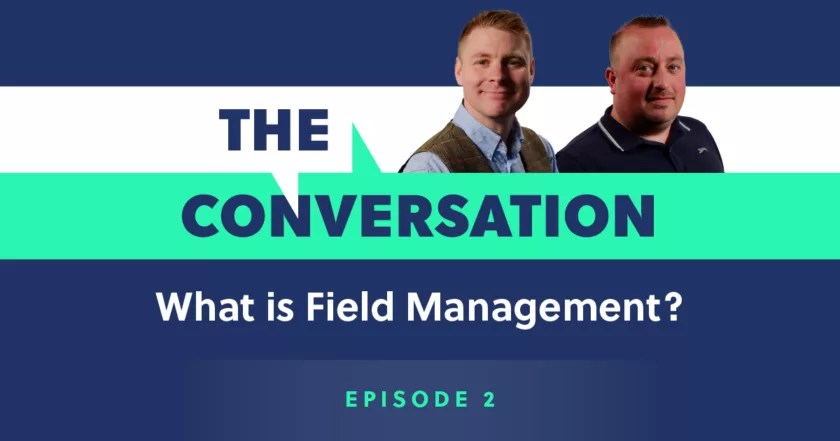
News
The Conversation - Episode 2

We’re excited to return with the second episode of our podcast, The Conversation. Last time, we sat down with Re-flow’s founders, Mike Saunders and Lee Wade, who took us on an insightful look into Re-flow’s past. Now that we’ve established what Re-flow’s all about, we wanted to tackle the second most important question regarding our operations – just what is field management software?
This time, the conversation was led by our own Josh Sims, Marketing Executive, who sat down with several of Re-flow’s team to get the answer to this essential question. This group, consisting of Ashley Wing, Head of Sales & Marketing, Daniel Moyse, Sales Manager, Rob Turland, Head of Support and Mikolaj Pawelczyk, Marketing Executive, provided crucial insights for any business looking to adopt a field management solution.

Opening with the basics, Josh asked what exactly field management software is and what makes it different from the many other similar terms one might come across, such as field service management software and project management software, to name a few.
DM: "Field management software is all about getting the source of truth from the field delivered back to your office. That’s about collecting data in the field, be it form-based or process-driven. Making sure things are signed, making sure safety and compliance is achieved and having all of that information available in real-time. This way of collecting data is more of a field managed way, with the operatives in mind, delivered by an app."
Following Dan’s brief breakdown of what field management software is, Ashley clarified what makes it stand out from many other similarly named solutions – in particular, what type of businesses it’s suited for.
AW: "Somewhere people get confused is that they might be looking for something like a project management solution, which is slightly different. Another one that people might find crossover with, is field service management. That’s more of a solution for smaller companies, where one man goes out and fixes a boiler. Field management software is all about scalability, supporting teams of 10 up to teams of 100, teams of 1,000, etc."
With the basic terms established, the discussion delved a little deeper, breaking down the defining features of field management solutions.
DM: "The main thing is the app. It’s usually simplistic, yet powerful, to ensure that information is captured – whether it’s form driven or whether it’s signing documentation, or just providing access to the knowledge and training. As we all know, managing skills and enforcing that is incredibly difficult as we’re progressing into this new digital age, so, all operatives have access to a central knowledge base, and it’s all at the push of the button."
These core features can be thought of as a foundation for a field management system, with a wide variety of advanced features being built on top to best fit the industry they’re built for. Mikolaj provided some further insight into just how varied this can be.
MP: "There’s a lot of variation in terms of features when it comes to these software packages. There is, however, an underlying core foundation of features which is, what Dan was talking about. Beyond that, there are certain solutions that are more tailored to specific industries, like construction or rail, and they’ll integrate processes that wouldn’t really apply anywhere else. I’ve seen some construction solutions that implement parts of BIM software, supporting real-time 3D design and even modelling, which is a fairly niche application relative to the number of sectors using field management software."
The entire discussion delves into many more important topics, including how field management software can help increase a business's cashflow, enforce health & safety compliance, improve efficiencies through automation and workflows, and integrate as part of a wider ERP system.

To learn the key information you need to approach adopting a field management solution with confidence, watch the full episode above, or listen on Spotify, Google Podcasts, Apple Podcasts and YouTube.



